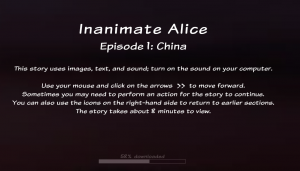Flutter
On why this is funny and why it isn’t.
First watch the video:
So, since my readership is so huge and diverse (and therefore may not understand all that’s being mocked in the clip), let me begin by explaining some of the humor.
- Flutter’s fictional founders are Stanford dropouts. It’s typical of web 2.0 shit that the founders were college kids at prestigious universities, who had (sometimes only) one good idea. Google’s founders were Stanford students. Facebook’s founders were at Harvard. And Twitter’s founders were from Cornell.
- “A lot of people don’t have time to twitter.” Yeah. The whole concept of microblogging is absurd. Even more absurd than blogging. But it certainly doesn’t require time.
- Nor does it require thought, really. “You hardly have to think about what you’re posting.” The majority of tweets are — like the majority of things people say — not witty, insightful, or really all that enlightening anyway.
- “Flaps.” And later in the video, some guy calls tweets “twits.” Perhaps not quite as amusing as how Stephen Colbert conjugates the verb, but funny nonetheless. It’s funny (ha ha) and funny (strange) that a new verb can enter our language so quickly.
- “FlutterEyes” mocks the kind of people who spend all their time texting other people, which is a direct slap in the face to those they’re interacting with in the real world.
- “MySpace, I guess.” Ha. MySpace is really uncool, and so it seems genuine that a hip web 2.0 company would be reluctant to develop easy access to it.
- Other hip web 2.0 applications have sold out and become more commercial. So the “$Pepsi” thing parodies those.
- “Shutter without the vowels.” I’ll let you figure that out. It’s also worth noting that twitter.com originally was twttr. No joke.
Okay, now that I’ve killed the humor by analyzing it, let me explain what’s actually somewhat scary about this Flutter concept. In my Science Fiction class this year, I’ve been examining predictions of future technology. Not just the crackpot predictions, mind you. But the well-grounded predictions made by respected academics. And there are a few things hinted at in the Flutter mockumentary that aren’t that far off.
First off, what will really happen to our intelligence? As writer Nicholas Carr points out in his famous article about Google making us stupider, “as we come to rely on computers to mediate our understanding of the world, it is our own intelligence that flattens into artificial intelligence.” This flattening to the artificial might happen sooner than we think.
It’s fairly inevitable, for instance, that our human memories will soon become unnecessary. Have you ever forgotten someone’s name? Ever had an argument about who took out the garbage last? According to Jim Gray of Microsoft Research, “It will soon be possible – in terms of cost and size – to store a complete digital video record of your life.” So you can settle that argument about who last took out the garbage. Eric Horvitz, also of Microsoft Research, takes this stuff a step further: “As more of our lives go digital, we may use a program to sort our data. And it could hook up to software that understands the things people forget.” Facial recognition software + video = never forgetting another name. This supersession of memory is almost a definite. If we, as a race, survive for the next three decades, we’ll see such things happening.
One of the costs, though, will be privacy. The Flutter video jokes about absolute transparency when it describes the iPhone app that will know where you are and “flap automatically.” This sort of thing is also a definite. In the near future, more and more items will be hooked up to the internet. People like Ray Kurzweil and Kevin Kelly have predicted that the internet, which we now access through our desktop and laptop computers, will be all around us. By placing RFID chips in food packaging and in clothing, we’ll literally be living in the web. And it will allow some pretty cool things. We could get customized recipe suggestions from the food items in our cupboard, which would “communicate” with each other. We could find a lost sweater simply by searching for it on Google.
We’re only a year or two away from having our mobile devices capable of updating every half hour with our GPS coordinates. Actually, many of them could do that right now with the right software. But as more places and objects get hooked into the net with these RFID chips and whatnot, our phones will be able to give more information than our GPS coordinates. They’ll be able to essentially track us throughout the day with identifiers like “Starbucks bathroom.” But the price will be privacy. “If you want total personalization,” Kevin Kelly notes, “you’ll need total transparency.”
If you’re willing to give up some privacy, though, you’ll probably find yourself integrating with technology more and more. That’s not to say you’ll allow a chip to be implanted under your skin, but perhaps you’ll get yourself a pair of FlutterEyes. Or maybe a pair of “active contact lenses,” which would “project words and images into the eye.” And if you do so, that might be the “gateway drug” of sorts to more technological augmentation. We already have some pretty useful augmentation in the form of cochlear implants and visual cortex implants. And there are currently paraplegics whose brains are hooked up to electrodes which allow them to move a cursor on a computer screen. (This was done four years ago to Matthew Nagle, by Dr. John Donoghue, the end goal being to allow those with spinal cord injuries to bypass the damaged neurons altogether.)
Bran Ferren of Walt Disney Imagineering — admittedly not as impressive an employer as others — claims that “the technology needed for an early Internet-connection implant is no more than 25 years off.” But Ray Kurzweil has made some equally bold assertions. Nanotechnology is currently taking off, and since technology develops at exponential rates, we will someday soon have respirocytes, nanotech red blood cell substitutes which are much more efficient than actual red blood cells. A human whose blood was made up of 10% nanotech respirocytes would be able to hold his breath for four hours. “Nanobots capable of entering the bloodstream to ‘feed’ cells and extract waste will exist (though not necessarily be in wide use) by the end of the 2020s. They will make the normal mode of human food consumption obsolete.”
Given, we’re now delving into some pretty far-fetched stuff that’s not going to happen really soon, but as long as we’re going there, let’s examine the ideas of James Hughes, author of Citizen Cyborg, who speculates, “if we get to the point where we can back up our memories and our feelings, we may be able to then share them with other people.” When you get married, you might “negotiate how much of your personal memory space you’re going to merge. . . . So the boundaries between us will begin to blur.” He also posits (as does Aubrey de Grey) that our life spans will get to be very long — perhaps in the 1000s of years. My first reaction to such assertions is to be scared. But Hughes gets philosophical: “I don’t want to be immortal. What I want is to live long enough so that I understand how profoundly illusory the self is and I’ve shared enough of my experiences and thoughts and I’ve stored them up and given them to other people enough that I no longer feel like this particular body — existence — needs to go on. . . . That’s the post-human equivalent of the Buddhist enlightenment.”
Is that where we’re headed? Enlightenment or stupidity? Man or machine?
Google’s founders (Stanford grads Larry Page and Sergey Brin) have claimed that they’re really “trying to build artificial intelligence and do it on a large scale.” Brin has stated, “Certainly if you had all the world’s information attached directly to your brain . . . you’d be better off.”
But Nicholas Carr counters with the following eloquent rebuttal: “their easy assumption that we’d all ‘be better off’ if our brains were supplemented, or even replaced, by an artificial intelligence is unsettling. It suggests a belief that intelligence is the output of a mechanical process, a series of discrete steps that can be isolated, measured, and optimized. In Google’s world, the world we enter when we go online, there’s little place for the fuzziness of contemplation. Ambiguity is not an opening for insight but a bug to be fixed. The human brain is just an outdated computer that needs a faster processor and a bigger hard drive.”
Who knows? Maybe some day, humanity will look back on this Age of Human Fallibility fondly and long for a sort of imperfection and lack of understanding no longer possible. Until that day, I still desperately want an iPhone.
For further reading:
Kevin Kelly’s TED Talk
U of Washington Tech Predictions
2057 Video (Includes paraplegic cursor movement)
Is Google Making Us Stupid?
James Hughes’ Citizen Cyborg
Results of Pew Poll of 700 tech experts on potential trends for 2020
Ray Kurzweil’s TED Talk
Ray Kurzweil’s main points from The Singularity is Near
Summary of WIRED UK’s top predictions
To the Best of Our Knowledge “Future Perfect: Our Computers”
Chip Implants for Paraplegics



